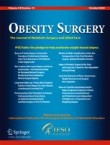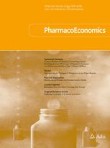By Tim Cook, Kim J Gupta, Robin Fackrell, Sarah Wexler, Bernie Marden
Early in the COVID-19 pandemic the first author of this blog wrote a Guardian article which was titled "ICU doctors now face the toughest decisions they will ever have to make." It referred to the possibility – then expected to be a reality – that the UK's intensive care resources would be insufficient to cope with the demands of the pandemic, and that doctors would be confronted with the need to make 'triage' decisions (a term from the battlefield) about which patients to treat in ICU when not all could be. At that time, it was common to hear it said that "doctors make these decisions all the time". In reality this is not true. In normal circumstances, as stated in the Guardian article, "doctors wrestle with decisions about what is right for the patient in front of them…but when resource-based triage occurs, the decisions become about what is in the "greater good" and "doing the best for the most."
In the Royal United Hospitals in Bath, as in other hospitals in the UK and beyond, we prepared for the mass influx of patients. We expanded our intensive care capacity, built up supplies, and retrained and redeployed staff. However, expectations and models still suggested that at the height of the pandemic demand would exceed resource significantly: specifically that there would be insufficient intensive care capacity in terms of beds, ventilators or staff to care for all patients who could benefit from it.
In this situation of national crisis, we hoped for clear national guidance on the principles that should be applied if medical demand exceeded medical resource. Several documents were produced but these were either treatises on the ethics of the matter or policy documents that tended to emphasise universal access and failed to directly address what actions to take when resources are inadequate. To be explicit, those decisions might include deciding which of two patients would be placed on a ventilator when two needed it and both would benefit but only one ventilator was available, or whether it would ever be acceptable to remove one patient from a ventilator to enable it to be used for another patient who had a better chance of survival. These are invidious situations – almost incomprehensible to talk or write about – but they were prominent in our thoughts in March. In the absence of national guidance, we needed either to develop a plan that could be enacted locally or simply let individual doctors use whatever personal mental and ethical resource they could summon when confronted with this dreadful situation. We chose the former.
A multidisciplinary group of individuals was brought together with medical, nursing, legal, lay and ethical experience. Together we pondered, discussed, and occasionally argued about what such a document should contain. Over a few weeks it took form and after reconsideration, consultation and revision, a working document was finalised. We hope we developed a document that enables structured, explicit, transparent decision-making in a situation we all hoped to avoid.
In the United Kingdom, during the first wave of the pandemic, the anticipated volume of patients requiring intensive care was ultimately mitigated by a three-fold approach. This involved a widespread, rapid expansion of intensive care capacity, a reduction of healthcare demand from non-COVID-19 sources by temporarily pausing much of normal healthcare delivery and by reduced demand through governmental and societal responses that included national lockdown. Service overload and the need for triage was thus narrowly avoided. But make no mistake, the system was severely stretched, and in some locations pushed close to breaking point.
Our triage document has fortunately not been required during the pandemic so far, and the document did not become hospital policy. However, it is not inconceivable that the document may yet be required. As winter approaches the NHS comes under the strain of 'normal winter pressures', compounded by an emerging second wave of COVID-19 activity, and a strong strategic desire to maintain normal NHS activity for as long as possible. National lockdown is also unlikely: schools, universities and many town centres will remain open. Winter, COVID-19 and routine services will all require and compete for the limited intensive care services. Preparations for national responses to manage increase ICU demand are well established, but it is not unthinkable that over this winter demand for services will overwhelm capacity and 'triage' documents yet may be needed at the bedside.
In an article in the Journal of Medical Ethics we have described how our document was created and we present the document itself. It is our strongly held position that creation of a document such as this is too important to be left to a few doctors and nurses in a single hospital. As part of the development process it was viewed and commented on by our local ethics advisory group – and greatly modified as a result. But we wanted to go further. The article in The Guardian stated "… we can't do this alone. If it becomes necessary, a framework to inform these decisions should be shared with the rest of society. In this urgent crisis we need a public discussion to help guide these difficult decisions, and clear advice from our medical, philosophical and political leaders." We have published the article and the document to be transparent and as a starting-point for stakeholder feedback and discussion. We welcome all comments and feedback, from ethicists and professio nals and anyone who is interested but especially from patients and the wider public.
Lastly, our paper has become particularly topical as several media outlets have raised claims and concerns that the elderly or chronically ill had reduced access to ICU admission in the first pandemic surge. Those concerns have included clams of extensive use of triage tools to control who might be considered for ICU admission. It is important not to conflate triage when ICU capacity still exists with its use in situations where there is insufficient resource, and such decisions are unavoidable. Our paper, and the triage tool it includes, relates only to the latter situation but we believe the discussion is none the less timely.
Paper title: Development of a structured process for fair allocation of critical care resources in the setting of insufficient capacity: a discussion paper. (Forthcoming)
Authors: Tim Cook, Kim Gupta, Christopher Dyer, Robin Fackrell, Sarah Wexler, Heather Boyes, Ben Colleypriest, Richard Graham, Helen Meehan, Sarah Merritt, Derek Robinson, Bernie Marden
Affiliations: Royal United Hospitals Bath NHS Foundation Trust, Combe Park, Bath
Competing interests: None
Social media accounts of post author: @doctimcook
The post Ethical decision making when demand for intensive care exceeds available resources. The need for public discussion. appeared first on Journal of Medical Ethics blog.







